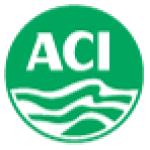Avloquin 250mg tablet 100's pack

Avloquin 250mg tablet 100's pack
৳ 122.00/=
Ex Tax: ৳ 122.00/=
- Stock: In Stock
- Model: MEDI-00128
- Generic: Chloroquine Phosphate
- Pack Size: Each pack contains 100 pcs. of Avloquin 250mg tablet
0 items sold
4033 views
Available Options
Indications
Chloroquine Phosphate is indicated in the treatment of malaria, prophylaxis and suppression of malaria, amoebic hepatitis and abscess, discoid and systemic and systemic lupus erythematosus, rheumatoid arthritis
Therapeutic Class
Anti-malarial drugs
Pharmacology
Chloroquine is used for malarial prophylaxis (as a suppressive) and in managing acute attacks of malaria. It is highly active against erythrocytic forms of P. vivax, P. malariae and P. falciparum. It influences Hb digestion by increasing intravesicular pH in malaria parasite cells and interferes with the nucleoprotein synthesis of the patient. It is also effective in extra intestinal amoebiasis. In RA chloroquine and more effectively hydroxychloroquine have a disease-modifying effect.
Dosage & Administration
Acute malaria:
- Adult: As base: Initially, 600 mg followed by 300 mg 6-8 hr later on day 1. On days 2 and 3, single doses of 300 mg/day.
- Child: Initially, 10 mg base/kg (max 600 mg base) followed by 5 mg base/kg (max 300 mg base) after 6 hrs. Single doses of 5 mg base/kg on days 2 and 3.
- Adult: As base: 600 mg daily for 2 days then 300 mg daily for 2 or 3 wk given with emetine or dehydroemetine.
- Child: 6 mg/kg daily. Max dose: 300 mg daily.
- Adult: As base: 150 mg daily. Max: 2.5 mg/kg daily. Discontinue treatment if there is no improvement after 6 mth.
- Child: Up to 3 mg/kg/day. Discontinue treatment if there is no improvement after 6 mth.
- Adult: As base: Initially, 150 mg once daily, reduce gradually after maximal response. Max dose: 2.5 mg/kg daily.
- Child: 3 mg/kg daily.
- Adult: As base: 300 mg once wkly, starting 1 wk before exposure, continuing throughout on a wkly basis and for at least 4 wk after exposure.
- Child: 5 mg/kg weekly.
Interaction
Concomitant therapy with phenylbutazone predisposes to dermatitis, antagonises effect of neostigmine and pyridostigmine, reduces bioavailability of ampicillin. Cimetidine inhibits metabolism of chloroquine raising plasma levels.
Contraindications
Hypersensitivity, known or suspected resistant P. falciparum infection, porphyria, retinal damage, concurrent hepatotoxic drugs.
Side Effects
Retinopathy, hair loss, photosensitivity, tinnitus, myopathy (long-term therapy). Psychosis, seizures, leucopenia and rarely aplastic anaemia, hepatitis, GI upsets, dizziness, hypokalaemia, headache, pruritus, urticaria, difficulty in visual accommodation.
The most serious toxic hazard of prolonged therapy with doses is the occasional development of irreversible retinal damage. For this reason considerable caution is needed in the use of choroquine for long-term high dosage therapy and such use should only be considered when no other drug is available. Defects in visual accommodation may occur on first taking choloquine and patients should be warned regarding driving or operating machinery.
The most serious toxic hazard of prolonged therapy with doses is the occasional development of irreversible retinal damage. For this reason considerable caution is needed in the use of choroquine for long-term high dosage therapy and such use should only be considered when no other drug is available. Defects in visual accommodation may occur on first taking choloquine and patients should be warned regarding driving or operating machinery.
Pregnancy & Lactation
Pregnancy Category C. Either studies in animals have revealed adverse effects on the foetus (teratogenic or embryocidal or other) and there are no controlled studies in women or studies in women and animals are not available. Drugs should be given only if the potential benefit justifies the potential risk to the foetus.
Precautions
Psoriasis, diseases of the haematopoietic or CNS systems, myasthenia gravis, hepatic or renal impairment, G6PD deficiency, epilepsy, childn. Pregnancy and lactation. Slow infusion is used upon IV admin to prevent cardiotoxicity.
Overdose Effects
Symptoms: Headache, drowsiness, visual disturbances, nausea and vomiting, CV collapse, shock and convulsions followed by sudden and early respiratory and cardiac arrest. ECG may reveal atrial standstill, nodal rhythm, prolonged intraventricular conduction time and progressive bradycardia leading to ventricular fibrillation and/or arrest.
Management: Treatment is symptomatic and should be prompt with immediate evacuation of the stomach by emesis or gastric lavage. Finely powdered, activated charcoal may be used within 30 min after ingestion of the antimalarial to reduce intestinal absorption of the drug. To be effective, the dose of activated charcoal should be at least five times the estimated dose of chloroquine ingested.
Management: Treatment is symptomatic and should be prompt with immediate evacuation of the stomach by emesis or gastric lavage. Finely powdered, activated charcoal may be used within 30 min after ingestion of the antimalarial to reduce intestinal absorption of the drug. To be effective, the dose of activated charcoal should be at least five times the estimated dose of chloroquine ingested.
Storage Conditions
Store at 15-30° C.







